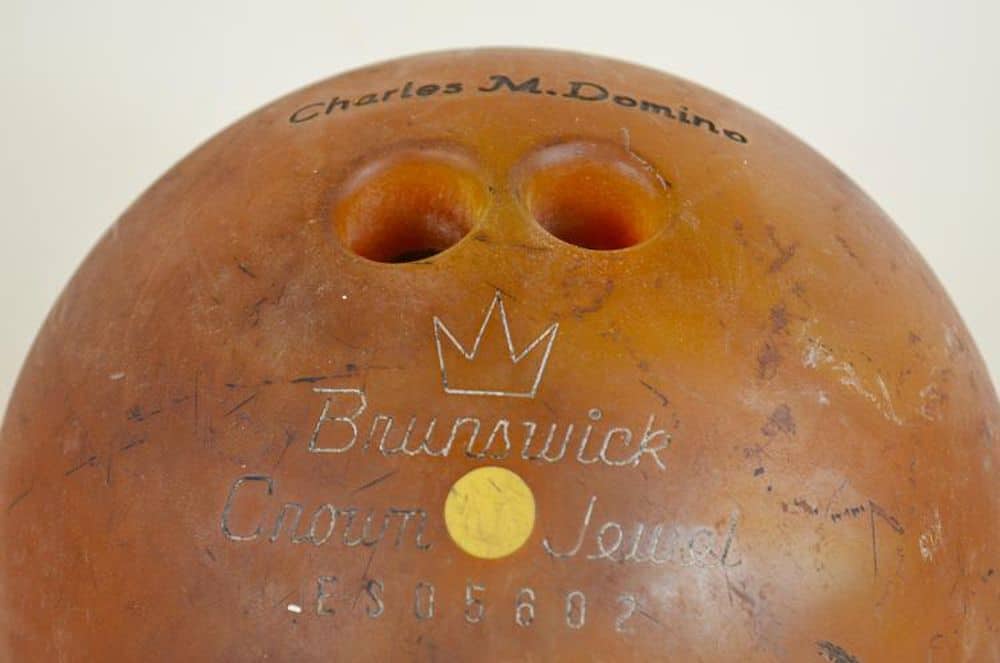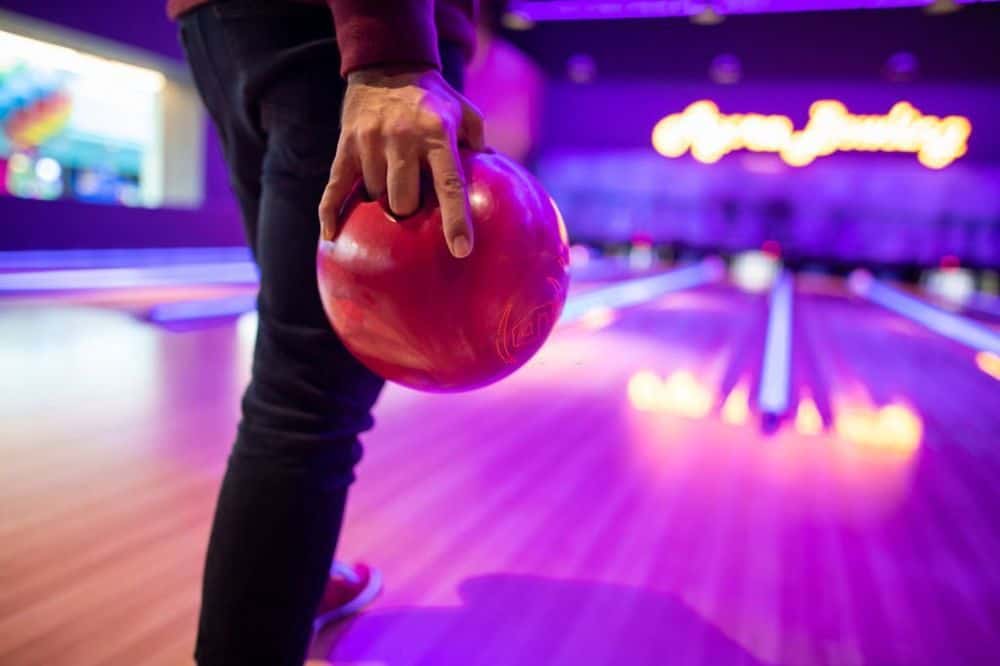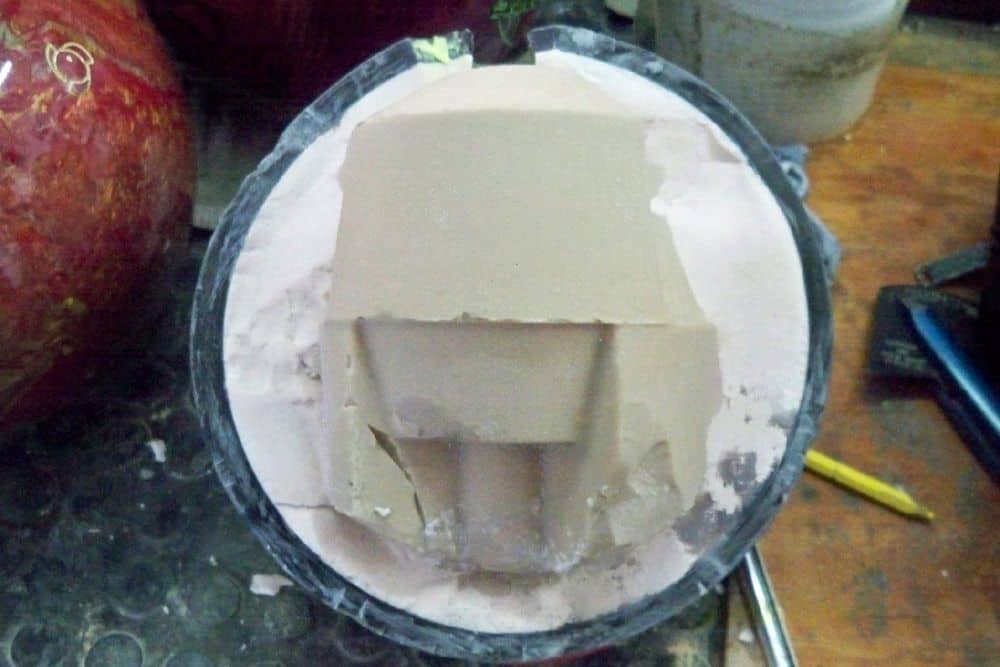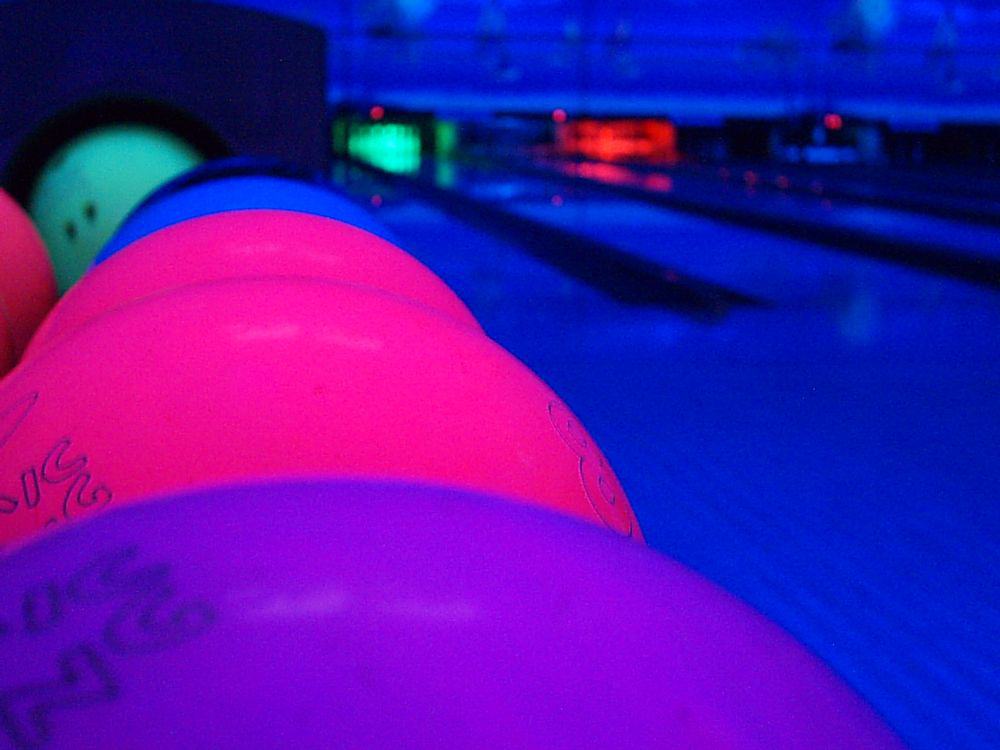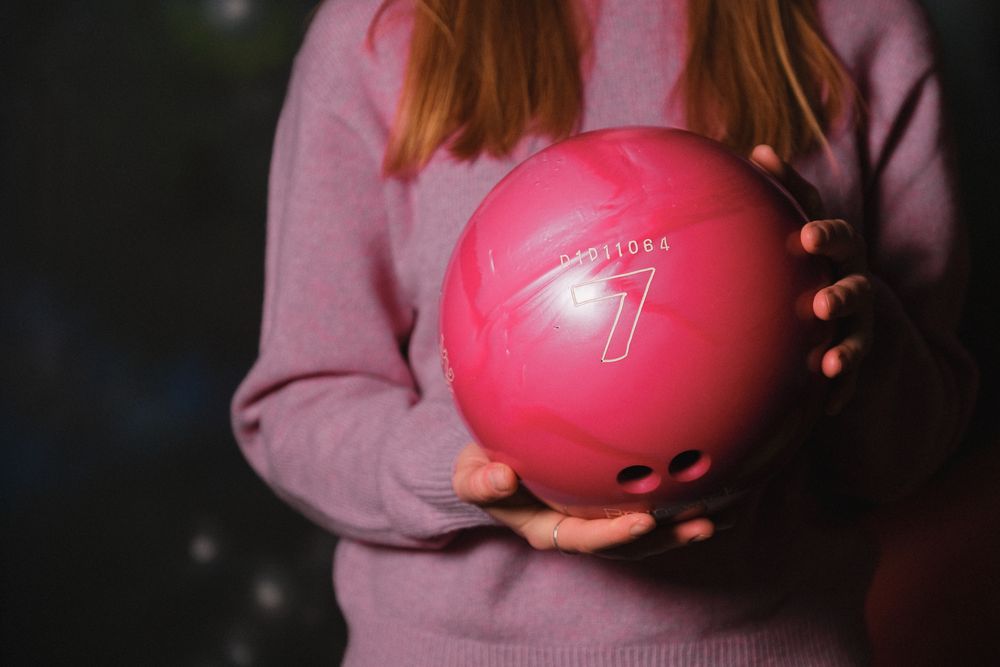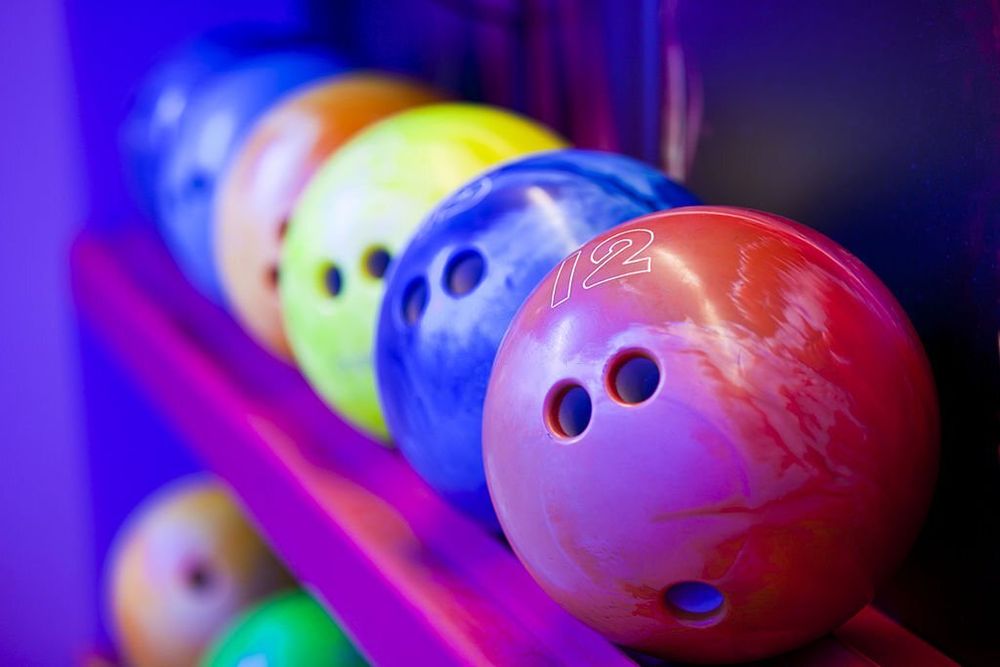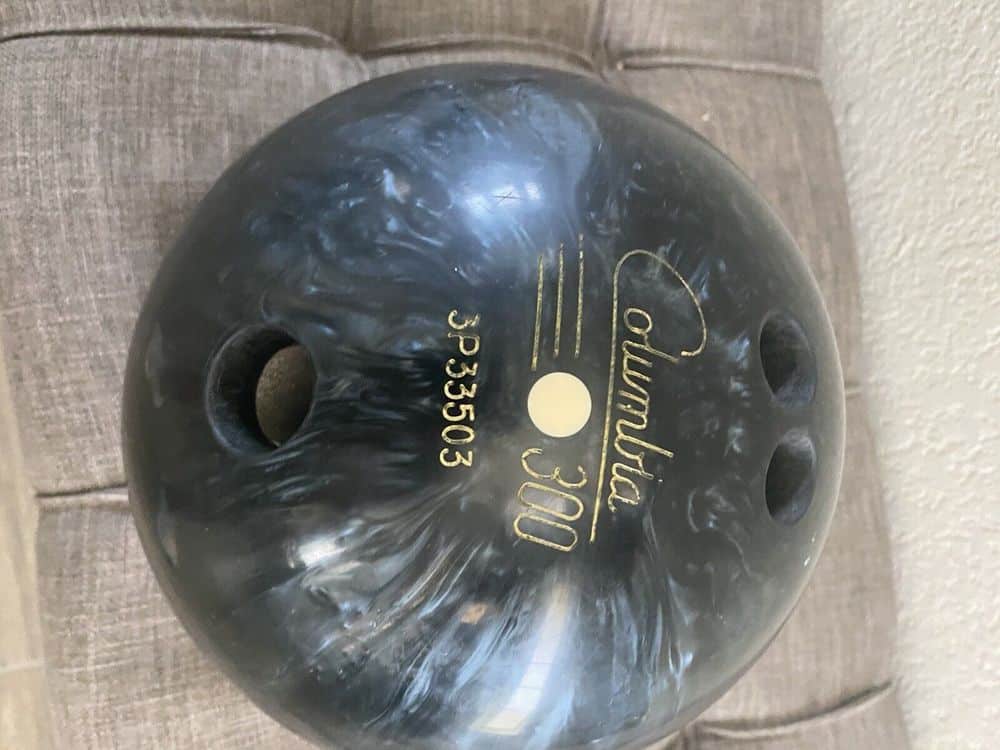Every bowling ball has a colored dot representing the ball’s pin.
The pin is essential in determining how to drill your ball to get the desired reaction on the lanes.
This article will explain the significance of the bowling ball’s colored dot and how it can improve your game.
What is a bowling ball dot (pin)?
A colored dot, or pin, is placed at the center of a bowling ball.
The player can get a sense of where the ball wants to spin if they know where it currently is.
After being thrown, the ball will revolve around the pin, leaving it on top or facing down the lane.
A bowling ball thrown at a moderate speed will not have enough time to change its rotation around the pin in a lane only 60 feet long, but it will continue to try.
The ability to strategically manipulate the placement of your holes is a huge benefit, so it’s helpful to know this ahead of time.
How is it made?
To ensure the perfect centering of the core within the ball, bowling ball manufacturers must suspend the cores in a fixed position while the mold hardens.
A tiny pin holds the core steady during this step.
The pin is removed from the mold once it has hardened, leaving a tiny opening in the ball.
The colored dot you see on the ball is this opening, filled with a color that starkly contrasts with the ball’s primary hues.
A smaller mark, typically a punch or a circle, can be found within a couple of inches of the pin.
While this is the ball’s center of gravity, it shouldn’t affect its motion much (unless you’re a skilled bowler).
However, it is useful information for the ball driller.
Where is it made?
As is common knowledge, the pin represents the x-axis on the ball’s surface.
It is the very pinnacle of the center.
The y-axis is approximately 6 3/4 inches from the x-axis. This portion of the ball gets us directly into the core’s side.
Modern bowling balls require precise drilling, so monitoring the ball’s mass loss is important as it’s drilled. Each hole drilled into the ball will alter the core’s shape.
Because of this, the drilled RG and differential won’t match the undrilled value.
The total differential is the difference between the x- and y-axes.
Essentially, it measures the difference between the core’s height and width.
A larger differential increases imbalance and flare if the core has a proper positioning.
Examine the oil ring surrounding the ball and find a central point from each piece: your PAP.
The PAP refers to the point on the ball that is the same distance as the track’s starting point.
Each bowler’s PAP is unique, and attempting to imitate them would be detrimental.
A complementary relationship between the pin and the PAP maximizes the potential of your ball.
Moreover, you want to avoid having a drilling layout that places the pin in an undesirable location relative to your PAP.
The ball’s placement determines its reaction and should match your playing style; just because a particular layout works for other players does not mean it also suits you.
Does PIN placement matter on a bowling ball?
The placement of the pin determines the distance between the center of the ball and its center of gravity.
Depending on how far apart they are, it reflects the ball’s reaction to the lane.
Shorter pins, ranging from 0 to 1 inch in length, roll up the lane faster and with a smoother arc as they approach the pocket.
In contrast, longer pins with a length of 4 inches or more roll further down the lane before marching towards the pocket.
Longer pins are easily identified by their distinctive, hockey-stick-like motion as they approach the pins.
The 2 to 4-inch long pins are the best option for layout because it allows ball drillers to control the ball’s roll-up depending on their preference.
For optimal results, the natural reaction of the ball to the lane should complement the drilling pattern chosen for the ball.
Even if the ball gets drilled to roll up later, it will do so earlier if the pin is short.
To achieve the desired ball motion, you would need to exert more effort and go the extra mile in this situation.
Choosing the appropriate pin distance and drilling is essential to ensure more accurate throws and higher scores.
PIN Up vs. PIN Down
Pin Up
It is important to note the pin’s positioning above the fingers. The result is that the holes get drilled away from the center.
Thus, the weight is removed from the side of the weight block rather than the top.
What this does is effectively reduce the thickness of the weight block.
The larger the hole, the greater the influence it will have.
On the majority of pin-up layouts, the thumb hole is approximately 6 3/4″ from the x-axis. As can be seen, this increases the difference between the x- and y-axes.
If the holes were located at the top of the weight block, the total differential would be lower, and the RG would be higher.
We know that a ball with a lower RG will transition faster because it is less resistant to direction changes.
Pin Down
Holes will be sunk lower into the core when using a pin-down layout.
The top of the weight block will lose more mass than the side.
Essentially, this reduces the original length of the weight block.
The finger drill path is now near the x-axis, and the thumb hole no longer intersects the y-axis.
It reduces the x-y difference, decreases the differential, and increases RG.
We know that a ball with a higher RG will transition more slowly because it is more resistant to direction changes.
Pin Up vs. Pin Down
Pinup layouts deviate from the breaking point significantly faster than pin-down layouts.
They are superior in pattern, depending on the proximity of the pin to PAP or the positive axis point.
Pin-down layouts, on the other hand, concentrate the weight block more on the palm, resulting in fewer flare rings on the ball.
The weight holes contribute to the differential and balance of the ball to achieve a particular ball response.
Those without weight holes should choose aggressive asymmetrical weight blocks or layouts with a shorter distance between the pin and PAP for symmetrical balls.
Because the ball’s reaction is not particularly aggressive, pin-down layouts allow players to remain in one area and provide a slower, more manageable ball reaction.
Because of its smooth motion, beginning flat patterns with pin-down balls at a straight angle would produce superior results.
Pinup designs are better suited for oil patterns that are higher and longer, such as home shots and sports shots.
These balls react with sufficient force and are a better option for deeper plays.
Conclusion
In a nutshell, the colored dots on bowling balls will indicate the direction in which the ball will most likely rotate.
The ball’s rotation is critical to ensuring that it will travel in a straight line to the target.

